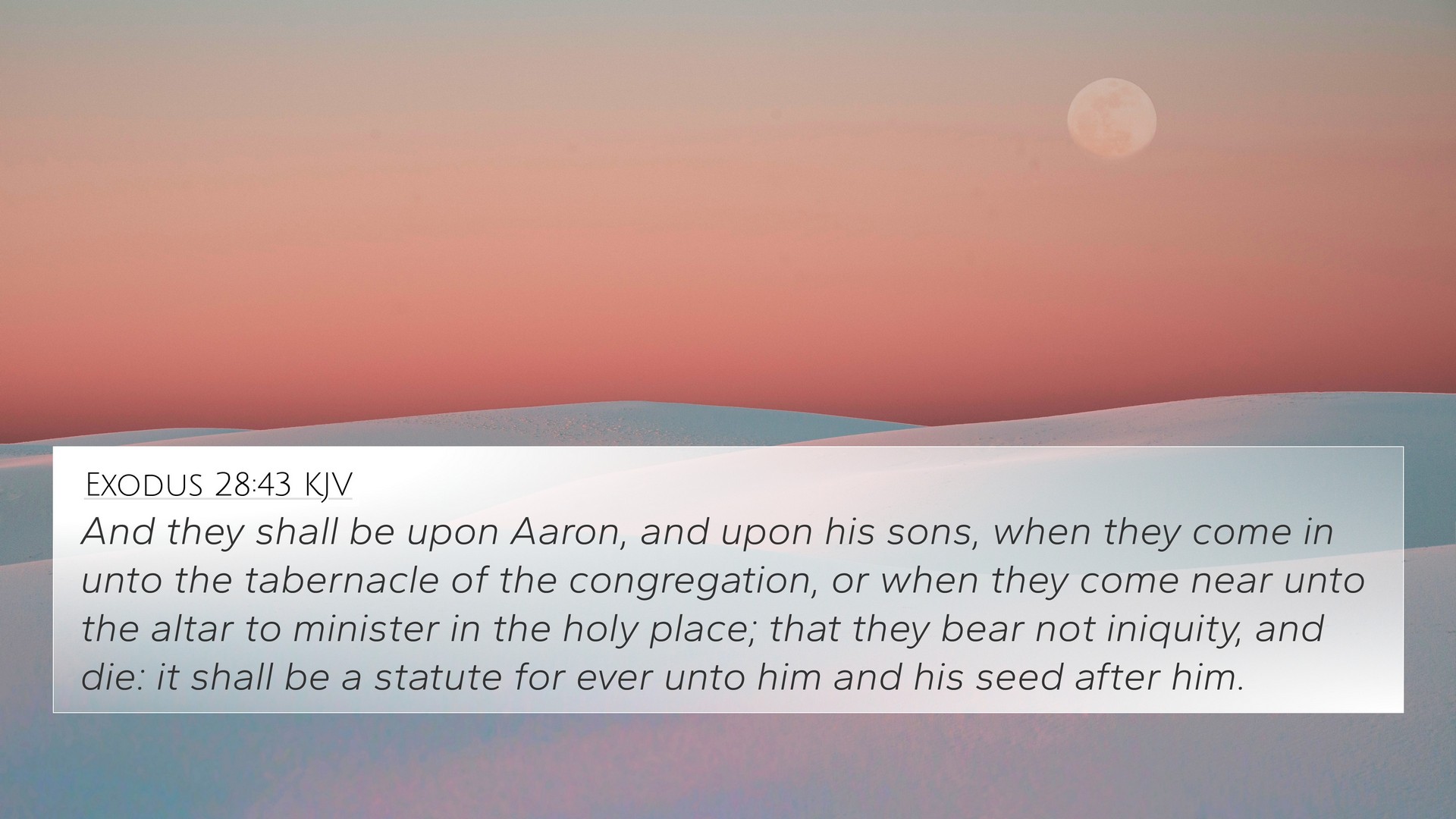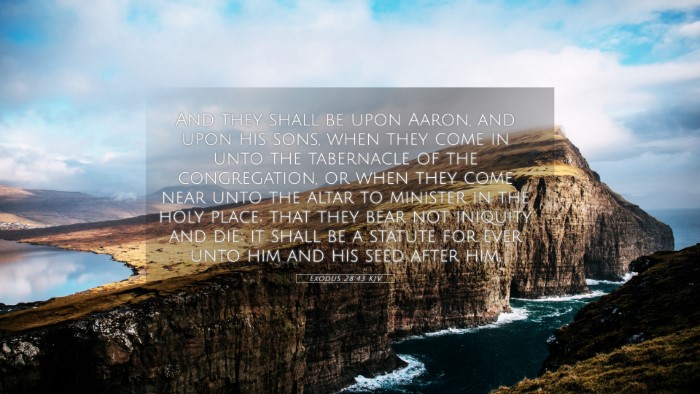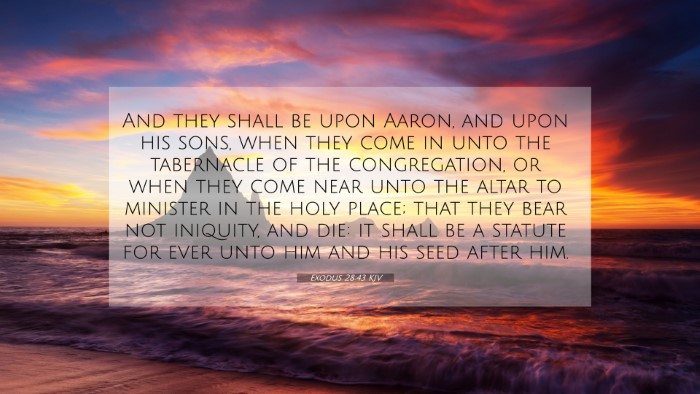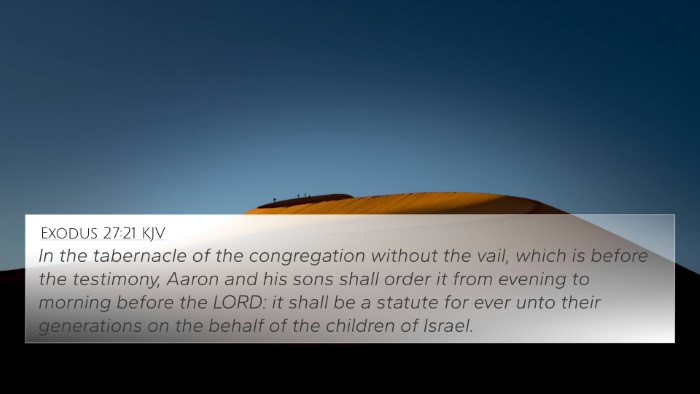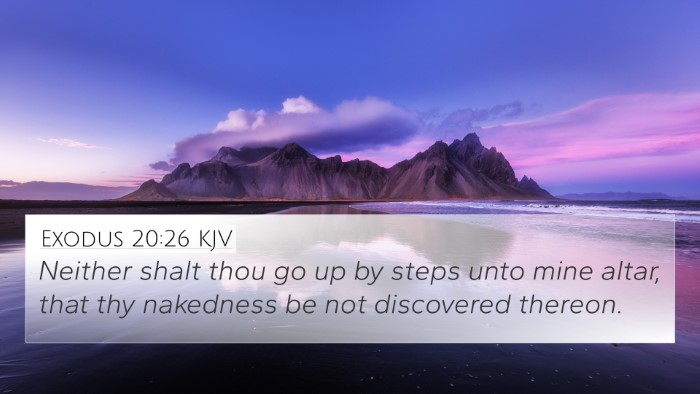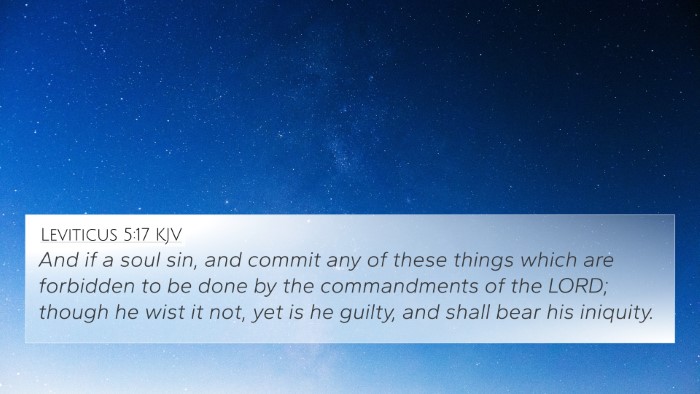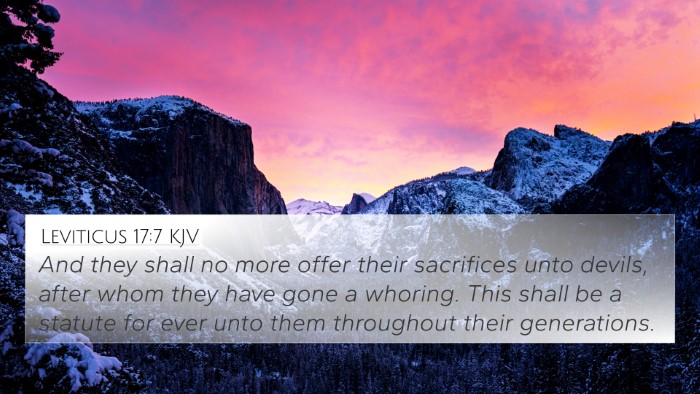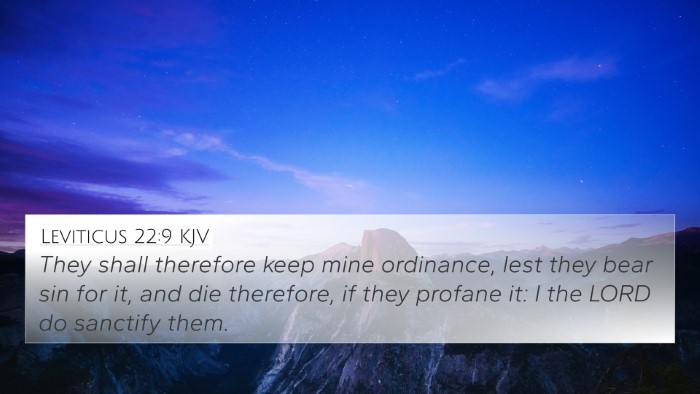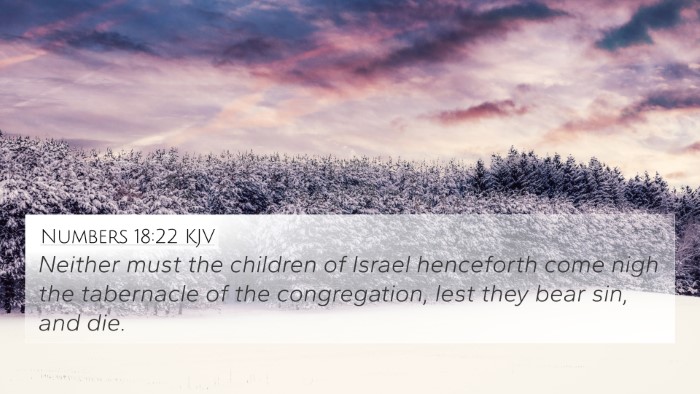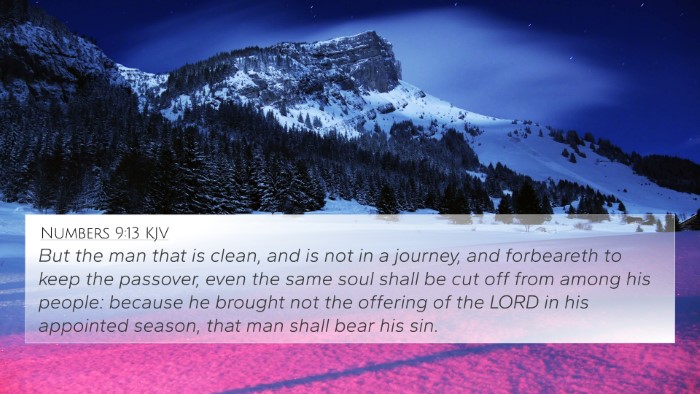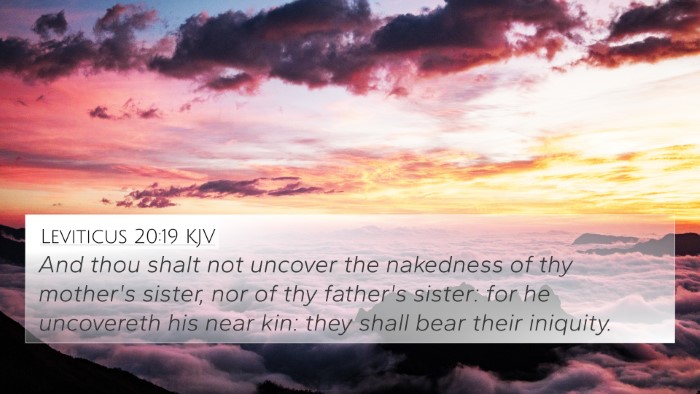Understanding Exodus 28:43
Verse Reference: Exodus 28:43 - "And they shall be upon Aaron, and upon his sons, when they come in unto the tabernacle of the congregation, or when they come near unto the altar to minister in the holy place; that they bear not iniquity, and die: it shall be a statute for ever unto him and his seed after him."
Overview
This verse forms an important part of the instructions regarding the priestly garments, specifically the breeches worn by Aaron and his sons in their service at the Tabernacle. The context emphasizes the necessity of holiness and ritual purity in approaching God.
Interpretations from Public Domain Commentaries
Matthew Henry's Commentary
Henry emphasizes the significance of the clothing associated with the priests. He notes that these garments symbolized their consecration and preparation for service. The breeches served not only a practical purpose by covering their nakedness but also reflected their standing before God. Further, he points out that the wearing of these garments was crucial in preventing the bearing of iniquity, which underlines the seriousness of ministerial duties.
Albert Barnes' Notes on the Bible
Barnes highlights that this statute ensured that the priests maintained a standard of holiness. The reference to “bearing iniquity” indicates a divine principle that those who serve in sacred roles are to do so with a clear conscience and purity. He also connects this idea to the broader concept of atonement and the integral role that proper conduct plays in worship.
Adam Clarke's Commentary
Clarke discusses the implications of the priest's attire in relation to their service. He notes that the failure to wear these garments could lead to death, reflecting the severe consequences of approaching God without the required holiness. Clarke correlates this with the New Testament teachings about the role of Christ as our high priest, emphasizing that Christ fulfills the requirements for holiness that the priests of Aaron's lineage typified.
Theological Insights
The necessity for the priests to wear specific garments, as outlined in Exodus 28:43, points towards a theology of separation: the holy from the common and the pure from the impure. This separation not only prevents physical exposure but also emphasizes a spiritual separation required to serve God acceptably.
Related Bible Verse Cross-References
- Leviticus 10:1-3 - The priesthood's responsibility to maintain holiness.
- 1 Peter 2:9 - The call for all believers to be a royal priesthood.
- Hebrews 5:1 - The role and duties of a high priest.
- Exodus 28:36-38 - The significance of the plate of holiness on the high priest's forehead.
- Numbers 20:26 - The importance of consecration among the people of God.
- Psalm 104:2 - God's majesty and the creation of His garments.
- Revelation 19:8 - The fine linen of the saints symbolizing righteousness.
Thematic Bible Verse Connections
This verse draws connections to various themes throughout the Bible:
- Holiness: The idea that God requires His servants to be holy.
- Consecration: The significance of being set apart for God’s service.
- Judgment: The consequences of failing to adhere to divine instructions.
Conclusion
Exodus 28:43 serves as a poignant reminder of the holiness required in service to God. The priestly garments are rich in symbolism, representing not only physical but also spiritual cleanliness. Understanding the significance of this verse enhances our grasp of the continuity of God’s holiness from the Old Testament to the New Testament, where believers are called to step into a priestly role through Christ. It highlights the irrevocable standard that echoes throughout the narrative of salvation history.
